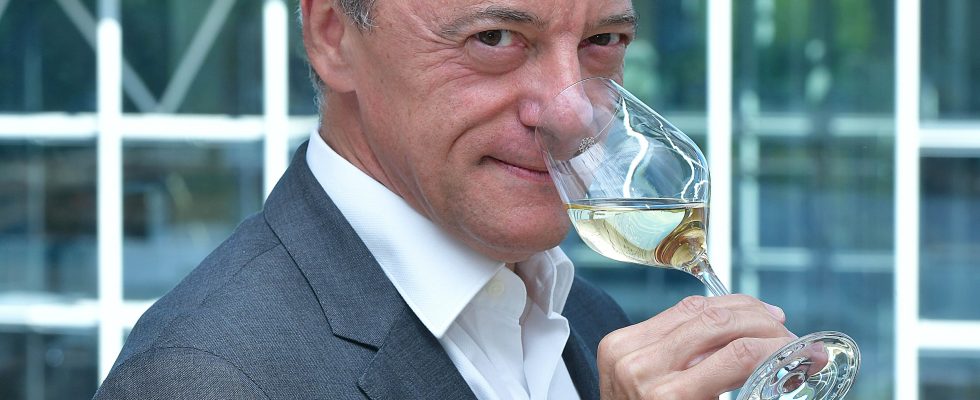L’Express: You started your career in marketing and international luxury houses. How did you get into the world of wine?
Christopher Juarez : I am indeed a lay brother! In haute couture, I was going around in circles. And during my many trips, the image and place of French wines in the world had surprised me: those from Italy and the New World were doing much better. I became convinced that there was a lot to do in this sector. My first harvests took place in 2003, in Chablis, with Michel Laroche, who entrusted me with the general management of his company. The estate’s incursions into Languedoc, Chile and South Africa have allowed me to appreciate a 360-degree view of the activity. I then discovered the world of cooperation in Cognac, in 2011, at Unicoop, before joining the Nicolas Feuillatte Wine Center five years later.
What then is your mission?
The roadmap was clear: move upmarket, develop a brand universe – which I knew well given my experience – increase the share of exports and reaffirm Nicolas Feuillatte’s positioning. The house had built its success on a universal approach of “accessible luxury”: it could not address all market segments. It was important to rationalize the portfolio by creating two collections: one devoted to CHR (traditional channels – wine merchants and restaurants), the other to mass distribution. And to enrich it with new references, alongside the flagship brand.
Isn’t that the role of Palmes d’Or?
The prestige cuvée must boost the image of Nicolas Feuillatte, so there is no question of making it a separate brand. We must develop it by keeping it in the historical fold. A balancing act!
Did the takeover of Abelé in 2019 surprise the profession?
It was audacious for the Landerneau from Champagne, but I felt a lot of leniency towards this iconoclastic approach. Everything had to be rebuilt: we reinvented the wines, rehabilitated the site, restored the luster to the house. With an artisanal approach of 150,000 bottles, we want to make it the Hermès of Champagne.
Why the merger with Castelnau?
The need to step up, earn points internationally. The operation took place with the general consent of the members of the two original structures. With respect: we have kept the style of the wines and are relaunching the brand.
After this merger, what does Terroirs et Vignerons de la Champagne (TEVC), the new giant in the sector, represent?
TEVC brings together 82 cooperatives, 6,000 members, i.e. a third of the region’s winegrowers, and works on some 2,800 hectares, 480 presses and two winemaking centers, in Chouilly and Reims. Sales amounted to 14 million bottles, to which must be added the 7 million that we sell to our members wishing to trade under their own label. Enough to ensure our development in the CHR and our presence on foreign markets.
Henriot’s revival is of a completely different nature. Why take this step?
After the merger with Castelnau, the need to be backed by a large house became significant. If the transfer is validated, in September, TEVC will for the first time manage a vineyard of its own. Until then, only members owned vines. Henriot owns 36 hectares in organic conversion. We’re going to have to get our hands dirty!
